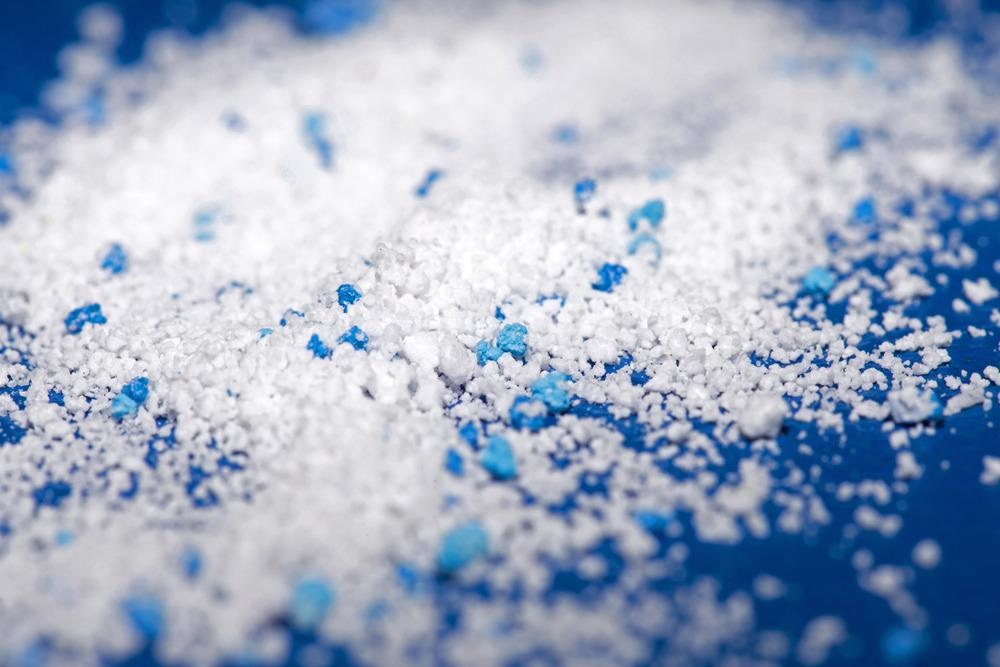The latest estimates put the amount of plastic ever produced at around 8.3 billion tons. Of this, around 60% is now waste. Plastic waste erodes from plastic materials due to weathering and mechanical abrasion and pollutes the environment in macro- micro- and nanoparticles. Nanoparticles are light enough to float in the air like gas, and nanoparticle plastic pollution has been found on every corner of the planet. Two recent studies revealed the extent of nanoplastic pollution.

Image Credit: chayanuphol/Shutterstock.com
Nanoplastic Pollution in the Alps
Researchers from Empa (the Swiss Federal Laboratories for Materials Science and Technology), Utrecht University (Netherlands), and the Austrian Central Institute for Meteorology and Geophysics published an article in the journal Environmental Pollution in November 2021 that found evidence for widespread nanoplastic pollution around the world.
The authors of the study showed how nanoplastics could travel thousands of kilometers through the air, finding that in the Alpine country of Switzerland, about 43 trillion plastic particles land each year. The study estimates that the annual combined weight of plastic nanoparticles landing in Switzerland is about 3,000 tons.
However, the reported figures are considerably higher than other findings from other studies in other countries. In fact, the field of nanoplastic research is still relatively immature. The Empa-backed research was the most comprehensive nanoplastic pollution study made to date.
The authors developed a chemical method to count plastic nanoparticles: using a mass spectrometer, they were able to determine the contamination of snow samples with plastic. The team removed a part of the top layer of snow near a marker every day in the morning, carefully storing the samples.
Challenges in keeping the samples free of unintended nanoplastic contamination, for example, from the technicians’ clothes, meant the team had to remain motionless in the lab whenever a colleague was handling open samples.
The team used meteorological data to trace the origin of the plastic nanoparticles. They showed that densely populated urban areas account for the majority of nanoplastic pollution. Nearly a third (30%) of plastic nanoparticles found were from within a 200 km radius around the sample site, mostly from nearby cities.
But plastic nanoparticles were also found that had come from the ocean, lifted into the air with spray from waves, and then carried by winds to land-locked, mountainous Switzerland. The researchers found that approximately 10% of the nanoplastic pollution they found had been blown into Switzerland from 2,000 km away.
Nanoplastic Pollution from Pole to Pole
Another recent study, led by the same Utrecht University professors who contributed to researching nanoplastic pollution in the Alps, has found evidence of nanoplastics in both the north and south poles for the first time. This demonstrates just how far the tiny particles can travel on the wind. The team was surprised to learn that around 25% of plastic nanoparticles in the environment come from vehicle tires.
In the follow up paper, published in the journal Environmental Research in 2022, the researchers described core analysis from Greenland’s ice cap that showed how nanoplastic pollution has been contaminating that remote corner of the world for the last five decades. The lightweight nanoplastics were thought to have blown from North American and Asian cities to Greenland on prevailing winds.
The core was drilled through 14 m of Greenland ice, made up from layers of snowfall built up from 1965 onwards.
The team also found nanoplastic pollution in sea ice in Antarctica’s McMurdo Sound. They said that these nanoparticles were more likely to be transported by ocean currents than by prevailing winds.
The scientists reported that nanoplastic pollution has now exceeded a safe limit for human health. Nanoplastics are known to be much more toxicologically active than microplastics (larger plastic particles.) When inadvertently eaten, plastic nanoparticles can damage biological tissues.
While microplastic pollution had previously been detected in Arctic ice, the researchers had to come up with new detection techniques in order to find and analyze nanoparticles in polar regions.
Half of the nanoparticle pollution found in Greenland was made up of polyethylene (PE), typically used in single-use carrier bags and packaging. A quarter was made from vehicle tyres (as noted above), and about a fifth was found to be polyethylene terephthalate (PET) which is used to make plastic drinks bottles and some clothing items.
In the Antarctic ice, half of the plastic nanoparticles found were PE as well, but after this polypropylene was the most common. Polypropylene is commonly used as fishing gear, as well as being in food containers and pipes. No plastic from vehicle tires was found in the Antarctic ice samples, which the researchers attributed to the south polar region’s much greater distance from any populated areas.
Nanoplastic Pollution is the World’s Problem
Before now, studies had already found plastic nanoparticles in UK rivers, North Atlantic seawater, and remote Siberian lakes. But the latest studies – discovering nanoplastic pollution in some of the most remote corners of the planet, Greenland, Antarctica, and the Alps – show that nanoplastic pollution is a global problem.
References and Further Reading
Carrington, D. (2022). Nanoplastic pollution found at both of Earth’s poles for first time. Guardian. [Online] Available at: https://www.theguardian.com/environment/2022/jan/21/nanoplastic-pollution-found-at-both-of-earths-poles-for-first-time.
EMPA (2022). Plastic Snowfall in the Alps – Nanoplastics Permeate the Environment. SciTechDail.com. [Online] Available at: https://scitechdaily.com/plastic-snowfall-in-the-alps-nanoplastics-permeate-the-environment/.
Materić, D., H.A. Kjær, and P. Vallelonga (2022). Nanoplastics measurements in Northern and Southern polar ice. Environmental Research. Available at: https://doi.org/10.1016/j.envres.2022.112741.
Materić, D. E. Ludewig, D. Brunner, et al (2021). Nanoplastics transport to the remote, high-altitude Alps. Environmental Pollution. Available at: https://doi.org/10.1016/j.envpol.2021.117697.
Mitrano, D.M., P. Wick, and B. Nowack (2021). Placing nanoplastics in the context of global plastic pollution. Nature Nanotechnology. Available at: https://doi.org/10.1038/s41565-021-00888-2.
Disclaimer: The views expressed here are those of the author expressed in their private capacity and do not necessarily represent the views of AZoM.com Limited T/A AZoNetwork the owner and operator of this website. This disclaimer forms part of the Terms and conditions of use of this website.